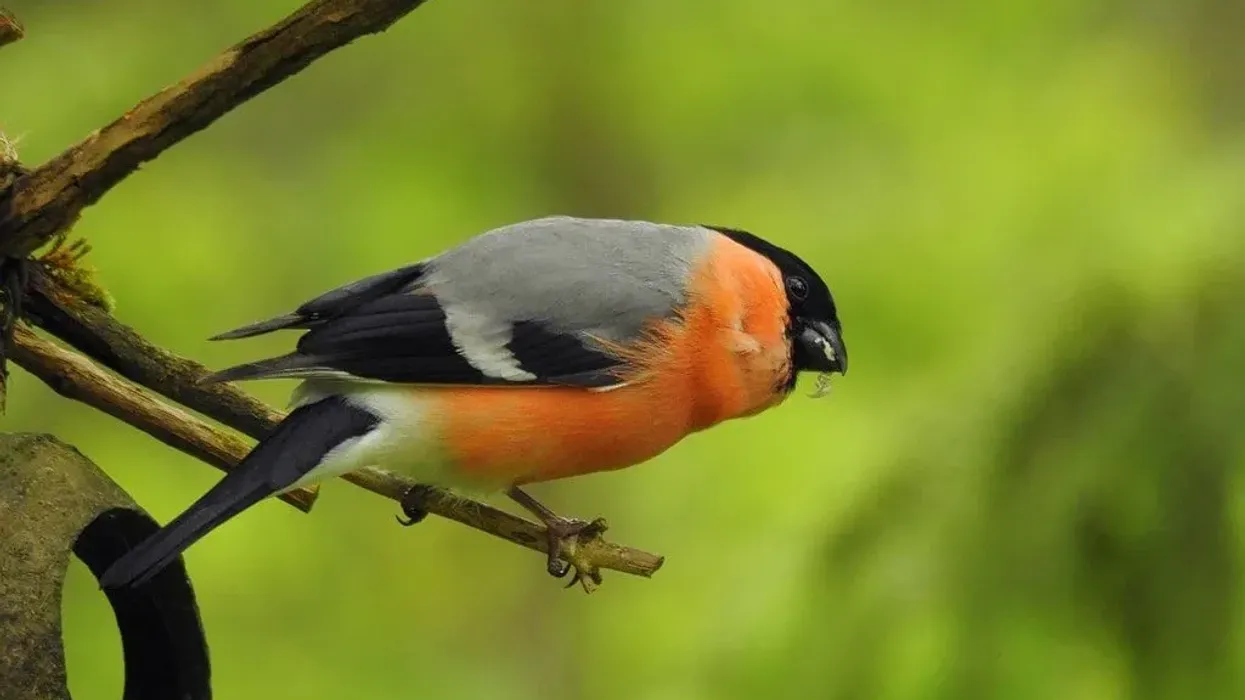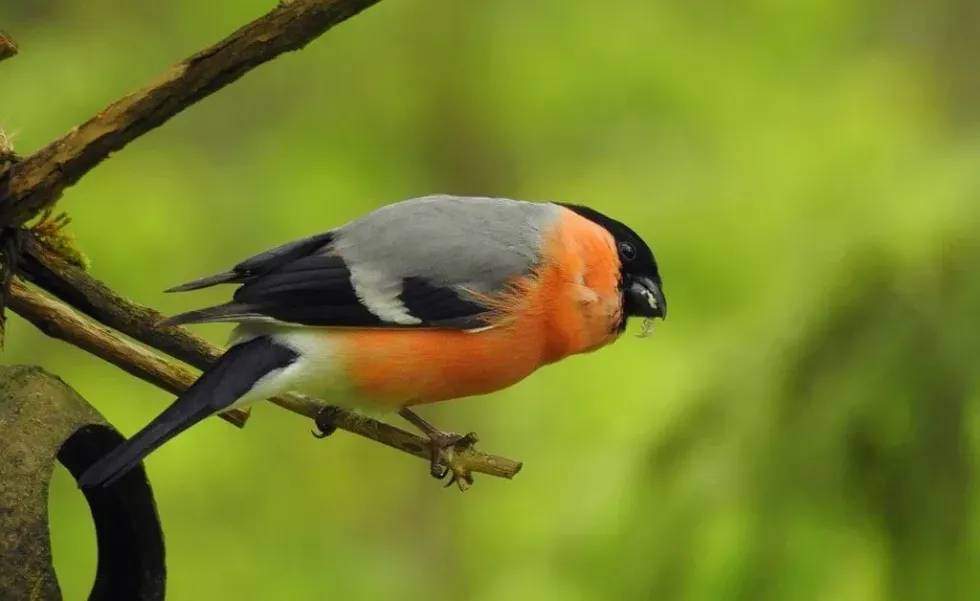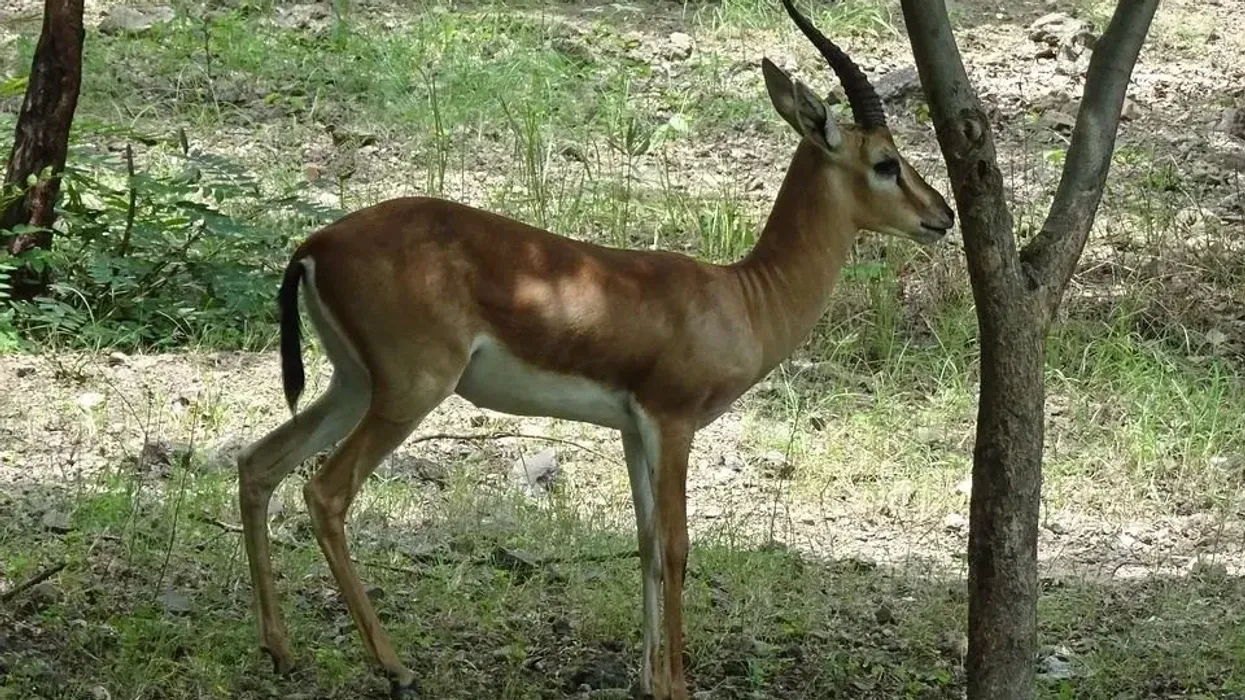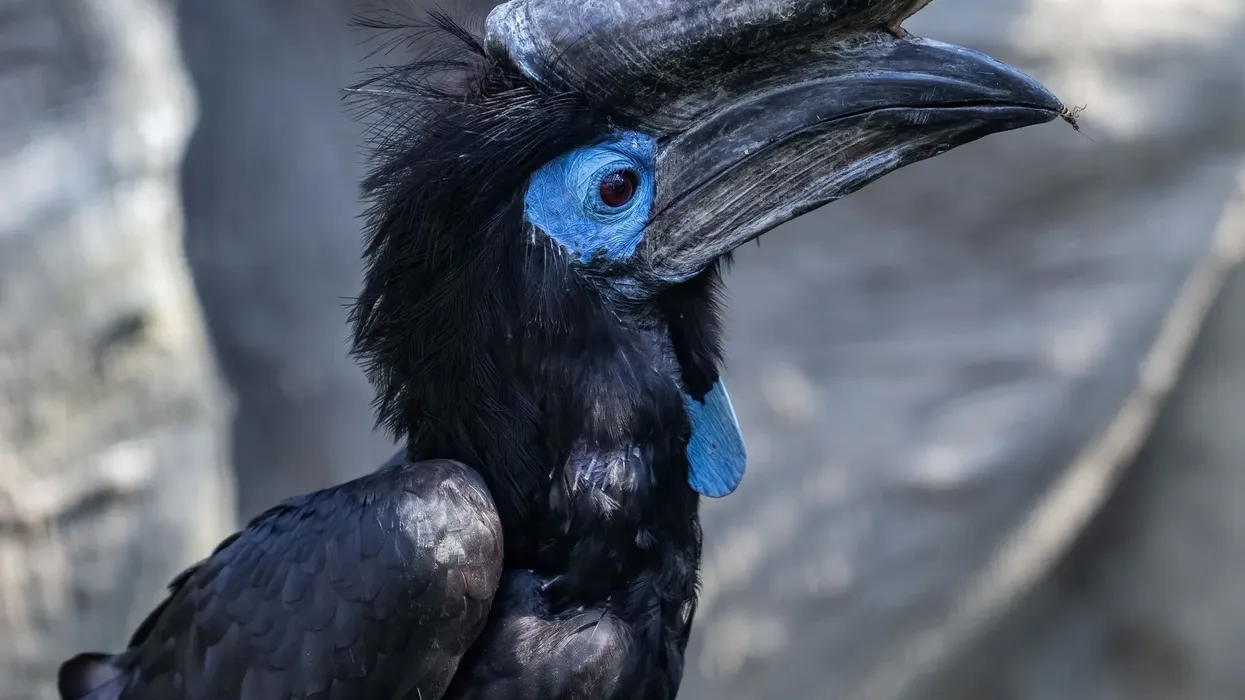The Eurasian bullfinch (Pyrrhula pyrrhula) is the sole member of the Fringillidae family that exists on the islands. Adult male and female birds of the Eurasian Pyrrhula may be distinguished by their distinct color patterns.
During the spring and early winter, this forest bird species can be observed in couples in the garden, eating on mixed seeds, sunflower hearts, and insects. The male species has a pure black jaw, a gray neck, and lovely pink sides to his head.
The pink is absorbed by the neck, chest, and stomach.
Female birds have a white rump, a tiny thick blackish bill, and a grayish-brown breast and stomach, whilst male birds have a blackish bill and a grayish-brown chest and stomach. The species' young bird is a simple dull brown color.
If you wish to bring these birds into your yard, you should plant some fruit trees that grow naturally in woodlands. They have a lovely song.
Continue reading to learn more! If you like reading this article, you should also read bullfinch and willow warbler facts.
Eurasian Bullfinch Interesting Facts
What type of animal is a Eurasian bullfinch?
This bull-headed creature is a bird species that sings a sweet song.
What class of animal does a Eurasian bullfinch belong to?
The Eurasianbullfinch is an animal in the bird (Aves) family. This species is a member of the Fringillidae family and is commonly found in Europe.
How many Eurasian bullfinches are there in the world?
The Pyrrhula pyrrhula is known to have 35,000,000-69,999,999 mature individuals.
Where does a Eurasian bullfinch live?
The Eurasian bullfinch range is in coniferous and deciduous forests, thick undergrowth, and cultivated regions. The European Pyrrhula is a timid and inconspicuous bird species that ranges from Europe to Asia and Japan. It is frequently observed flying from one bush to the next. It prefers buds in the winter and spring and causes significant damage in orchards.
What is a Eurasian bullfinch's habitat?
It may be found in orchards, parks, and gardens as well. The Eurasian bullfinch (Pyrrhula pyrrhula) ranges from Europe to Asia and Japan. This species breeds throughout temperate Europe and Asia. It is sedentary and resident, however in the winter, northern birds move southward. They travel across short to medium distances.
Who do Eurasian bullfinches live with?
It is frequently found in couples or small family flocks. They mostly perch in the trees, rarely on the ground. In the spring, they may form flocks of up to 50 birds. Defensive or territorial behavior has been seen. They nest alone and in silence.
How long does a Eurasian bullfinch live?
The Pyrrhula pyrrhula lives for almost 12 years.
How do they reproduce?
During the breeding season, the male species accentuates the magnificent color of his breast by dropping its wings and exposing its white rump underparts while waddling around the female. The display may begin with a simulated attack from female to male, and the pair is established as a result of this behavior.
They are not aggressive against one another. Male approaches female sideways, a bill aimed towards her and tail angled slightly sideways till it brushes the female's bill during the breeding season.
Then it bounces to the side and shows again, and both friends do it again. During this courting, they make faint whistles.
After that, the adult male regurgitates seeds into the female's beak. She fluffs its feathers as she bows and turns from side to side.
The nest of the European Pyrrhula is constructed on a tree limb, in a shrub, or in a thicket. The nest is roughly 4-6.5 ft (1.2-2 m) above the ground.
It is a female-built loose structure consisting of moss, twigs, and lichens, and lined with hair, moss, and roots. The female produces four to six pale blue eggs that are speckled with red-brown.
Incubation lasts around 12-14 days, with the female assisting and being fed by the male. The breeding adult male brings insects and seeds to the nest to feed the juvenile.
What is their conservation status?
Only one-third of all clutches in woodlands and two-thirds of those in farmlands survive to maturity. The rest are eaten by predators such as jays, magpies, stoats, and weasels.
Since the 16th century, the Pyrrhula has been persecuted in England. Nonetheless, their numbers continue to rise, and more efficient methods of eliminating them are continuously explored and so, they have been listed in the Least Concern category.
The European Pyrrhula has been decreasing in recent years. This loss might be attributed to habitat destruction, such as the removal of forest margins and hedgerows. It has destroyed hatching sites as well as food resources. Herbicide usage has risen, which has had an effect on bullfinches.
They were frequently captured as pests in orchards and farmlands until 1996. It is now only authorized with permission. Corvids and weasels are predators of the European bull-headed bird.
Eurasian Bullfinch Fun Facts
What does the Eurasian bullfinch look like?
The Eurasian bullfinch (Pyrrhula Pyrrhula) is a large bird with a bull's head. The adult male has a gray mantle. The rump is white, which contrasts with the blackish tail. The wings are blackish with a single light wing band.
Pink-red underparts with a white vent. The crown, neck, lores, and chin of the head are all black. Pink-red cheeks and throat.
The pupils of the eyes are black. The crown is bluish-black in color, with glossy feathers. The bill is blackish and short, conical, and low-based.
Pinkish-brown ate the legs and feet. Females have gray-brown underparts and a little darker mantle than the adult male. The juvenile female is similar to the adult female, except it lacks the black on the crown and around the bill. The wing bar is buff-brown in color.
How cute are they?
Because of the rich color patterns on the male, female, and young/ juvenile bullfinch birds' bodies, they are incredibly attractive and appealing to look at.
How do they communicate?
The European Bullfinch's typical song is a low, mournful whistled 'peeu' or 'pew'. Only at close range is the Eurasian bullfinch song heard. It's a faint, scratchy warble interspersed with gentle whistles.
How big is a Eurasian bullfinch?
It is a tiny bird that grows to be around 5.9-6.6 in (15-16.7 cm) long. They're much smaller than birds like little eagles, hawks, and pelicans.
How fast can a Eurasian bullfinch fly?
The bullfinch flies quickly bounding, with fast wing beats alternated with brief periods of closed wings. It has an undulating straight flight while traveling extended distances. It makes a call while flying. A white rump patch is seen mainly in flight.
How much does a Eurasian bullfinch weigh?
Teh Eurasian bullfinch (Pyrrhula pyrrhula) is a tiny passerine bird that weighs 0.05 lb (22.6 g).
What are the male and female names of the species?
In general, an adult male bird is referred to as a cock, while an adult female bird is referred to as a hen. However, if you become species-specific, it may alter.
The adult male is attractive and distinguishable, with a black hat, vivid pink cheeks and breasts, and a blue-gray back. Female tones are modest but have a noticeable black crown and stubby black bill.
What would you call a baby Eurasian bullfinch?
A baby/young Eurasian bullfinch could be called a young/juvenile Eurasian bullfinch bird.
What do they eat?
The European bullfinch likes feeding on the seeds and buds of fruit trees. Insects and fruit are also eaten by them.
In the spring, the European bullfinch mostly feeds on buds of fruit trees. It settles on the branch's tip, where the buds are, and then travels gently towards the trunk. When they are unable to find seeds, they eat on buds.
During the nesting season, the European bullfinch transports feeding to the chicks in specific pouches located at the base of the beak and on each side of the tongue. They're seen feeding in gardens.
Are they dangerous?
Bullfinches cause significant damage to orchards by nibbling on fruit tree buds. This has been a major issue, particularly in southeast England, where bullfinches have stripped trees capable of providing many tonnes of fruit so effectively that only a few pounds could be collected.
Would they make a good pet?
Yes, they may make terrific pets, but they are difficult to care for. You must build an orchard-like atmosphere if you wish to maintain them.
You may simply learn to replicate a whistle or a distinctive bird song. Eurasian bullfinches bird used to be a popular cage bird. If you wish to attract a bullfinch to your yard, plant sunflower seeds as well as elm, common nettle, and ash seeds.
Did you know...
The bullfinch was a popular captive bird in Victorian times due to its stunning plumage and voice. It is thought that the confined bird can be trained to mimic music, and playing a particular flute to the bird has become a popular hobby.
Why are bullfinches called bullfinches?
Bullfinch refers to two types of passerine birds. The name is supposed to refer to the bird's bull-like look, which includes a compact, neckless body form, and a short, deep beak.
Are bullfinches rare in the UK?
The bullfinch is a stunning bird that may be found all year in the UK. The adult male has a black head and face with bright pink underparts. Although it may be found in gardens, it is most frequently found in scrub and woods. Bullfinch numbers in the United Kingdom have decreased by 36% since 1967.
Here at Kidadl, we have carefully created lots of interesting family-friendly animal facts for everyone to discover! For more relatable content, check out these macaw facts and fox sparrow facts for kids.
You can even occupy yourself at home by coloring in one of our free printable Eurasian bullfinch coloring pages.










